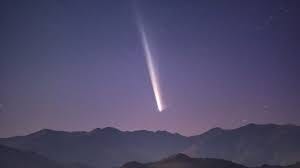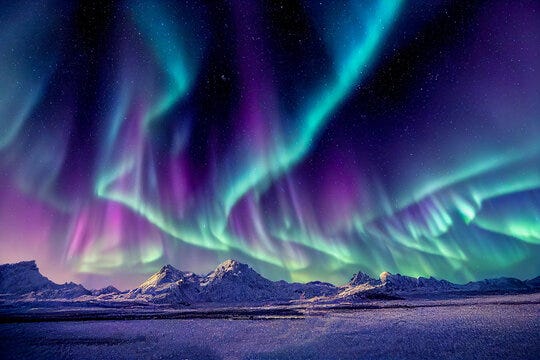Comet C/2023 A3 Tschinshan-ATLAS was at its closest point to Earth, 44 million miles, on Saturday, and should be visible to the naked eye in the western sky just after sunset the next few days. Last weekend was one of the better times to spot it. It had come out of the sun's glare.
We saw it on Sunday night. It comes around only every 80,000 years. Astronomers say it'll be visible for a few more days, possibly through October, first without and later with binoculars. But once it moves away, it won't be back for 80,000 years.
Miss this one, and there's no second chance.
This comet comes from the Oort Cloud, a barrier of icy debris around our solar system, well out past Pluto. Some comets come around Earth with relative frequency. One known as Encke's Comet visits every 3.3 years. The famous Halley's Comet comes every 76 years. It was last visible from Earth in 1986 and will return in 2061.
Comets are large objects made of dust and ice that orbit the sun. Best known for their long, streaming tails, these ancient objects are leftovers from the formation of the solar system 4.6 billion years ago. The comet making its appearance now derived its name from those who first discovered it last year, the Tsuchinshan, or "Purple Mountain," Observatory in China and the ATLAS telescope in South Africa. This is what we saw!
Last Wednesday evening we drove out to a place with no light pollution in an attempt to see the Northern Lights. They were not visible to the naked eye that night where we live but we were able to see them through our camera. Here, in Reno, what we saw was limited to a red glow with a small bit of purple. Much further north one could see a more complex display like the one pictured below.
An aurora also commonly known as the northern lights (aurora borealis) or southern lights (aurora australis),is a natural light display in the Earth's sky. It is predominantly seen in high-latitude regions (around the Arctic and Antarctic). Auroras display dynamic patterns of brilliant lights that appear as curtains, rays, spirals, or dynamic flickers covering the entire sky.
Auroras are the result of disturbances in the Earth's magnetosphere caused by the solar wind. Last week there was a major disturbance resulting from the speed of the solar wind. It altered the trajectories of charged particles, mainly electrons and protons, in the magnetospheric plasma. The resulting ionization and excitation of atmospheric particles caused them to emit light of varying colors and complexity.
Most of the planets in the Solar System, some natural satellites, brown dwarfs, and even comets also host auroras. If you have a chance, here on Earth, don’t miss it!
Back in August, I posted a story about The Perseid meteor shower. It is one of the best shooting star displays of the year. This year it peaked around the night of Aug. 11 and before dawn on Aug.12, with good viewing conditions for a few days on either side of the peak. This meteor shower is visible annually from mid-July to late August. Although they occur annually, there's anticipation for a potential Perseid meteor storm in 2028, mark your calendars!
2024 has been a great year for star gazing so far. In addition to the amazing events mentioned in this article, there was a total eclipse! But the comet passing Earth now may be your last chance to see some magic in the sky this year. Check it out tonight!
I have many stories about my experiences in Vietnam, the military and at West Point. Plus lots of life stories, stories about adaptive sports, my adventures, my travels and great music too. When you click Subscribe you will be presented with options. One is to remain or become a free member. The next level up is $5 monthly and you can unsubscribe anytime. Check it out.






